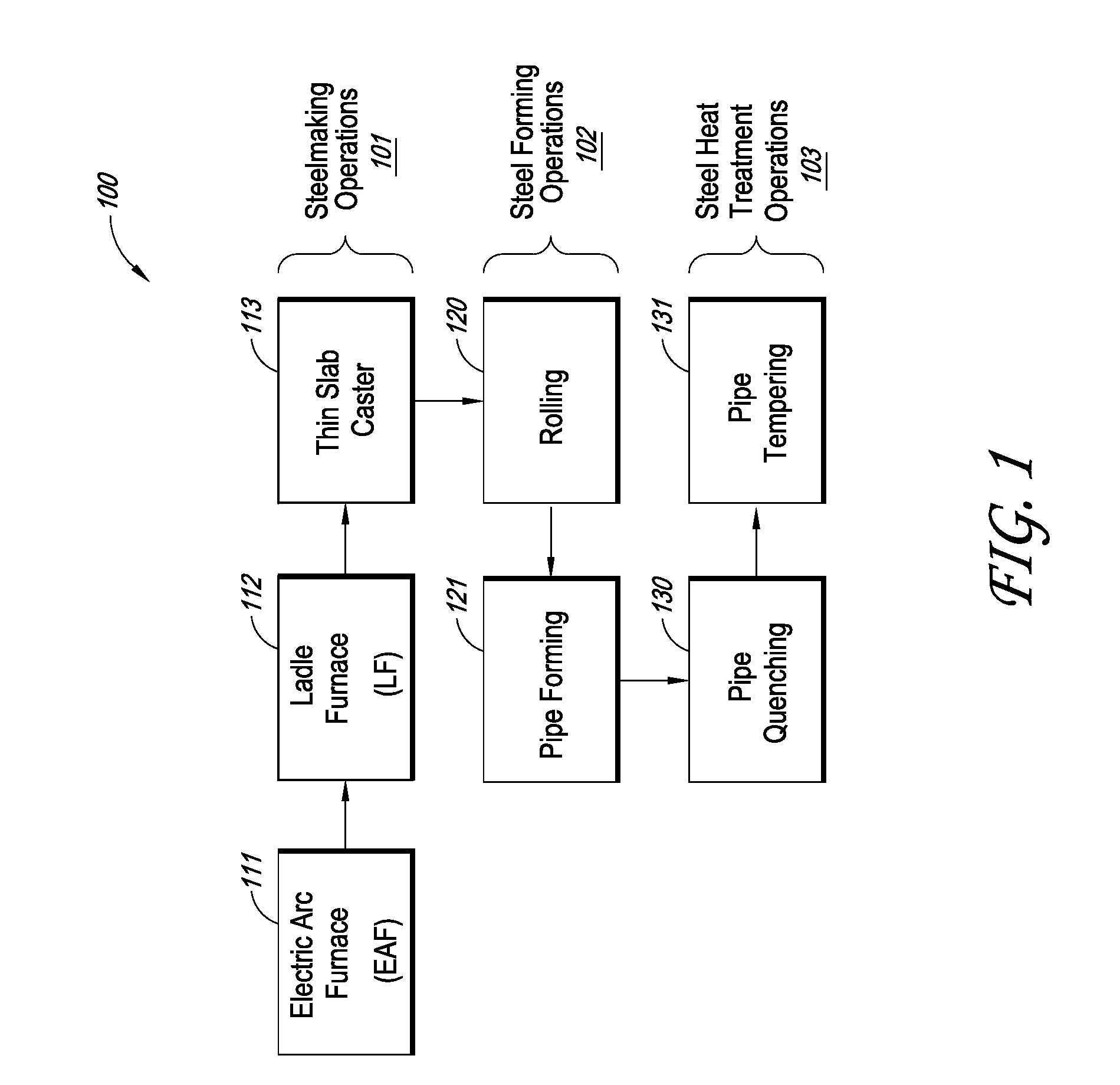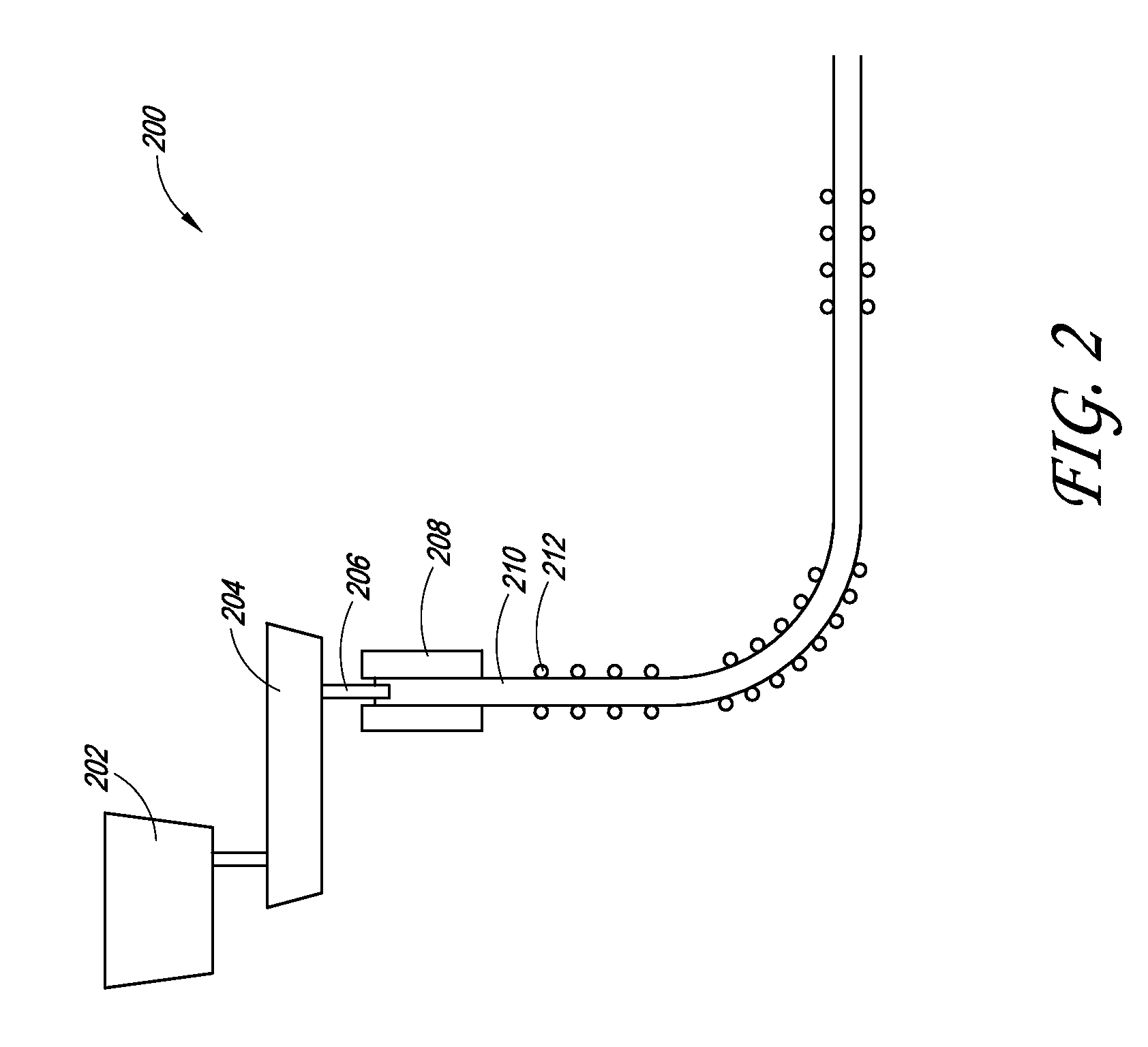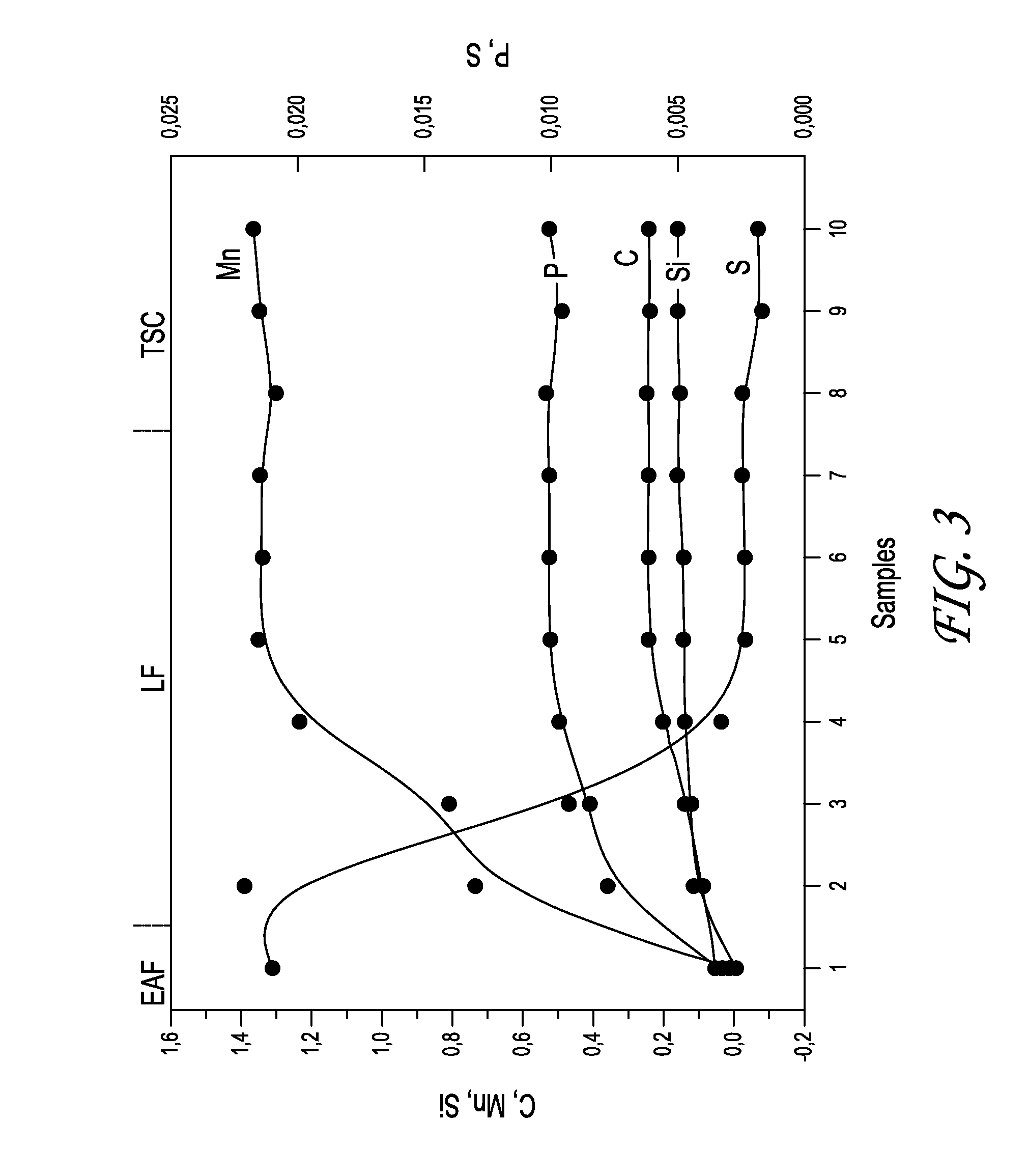Compact strip or thin slab processing of boron/titanium steels
- Summary
- Abstract
- Description
- Claims
- Application Information
AI Technical Summary
Benefits of technology
Problems solved by technology
Method used
Image
Examples
Embodiment Construction
[0023]Compared to conventional continuous casting (CCC), other casting techniques, such as compact strip process and thin slab caster, are expected to encounter difficulties with casting B / Ti steels. For example, B / Ti steels may tend to be more prone to cracking, due to precipitants of boron nitride and titanium nitride occurring in these processes, increased hardenability that may generate stress conditions, the presence of elements that can interact with the mold powder, etc. Furthermore, the compact strip process usually involves casting a slab with a thickness that is less than CCC and casting at a greater rate than CCC. Therefore, compact strip processes may be more sensitive to problems of heat transfer in the casting mold than CCC process. In addition, because there is no opportunity for slab conditioning before rolling, surface quality problems that originate at mold or slab levels cannot be fixed. Thus, since B / Ti steels are more prone to cracking, B / Ti steels produced from...
PUM
| Property | Measurement | Unit |
|---|---|---|
| Temperature | aaaaa | aaaaa |
| Length | aaaaa | aaaaa |
| Length | aaaaa | aaaaa |
Abstract
Description
Claims
Application Information
 Login to View More
Login to View More - R&D
- Intellectual Property
- Life Sciences
- Materials
- Tech Scout
- Unparalleled Data Quality
- Higher Quality Content
- 60% Fewer Hallucinations
Browse by: Latest US Patents, China's latest patents, Technical Efficacy Thesaurus, Application Domain, Technology Topic, Popular Technical Reports.
© 2025 PatSnap. All rights reserved.Legal|Privacy policy|Modern Slavery Act Transparency Statement|Sitemap|About US| Contact US: help@patsnap.com



